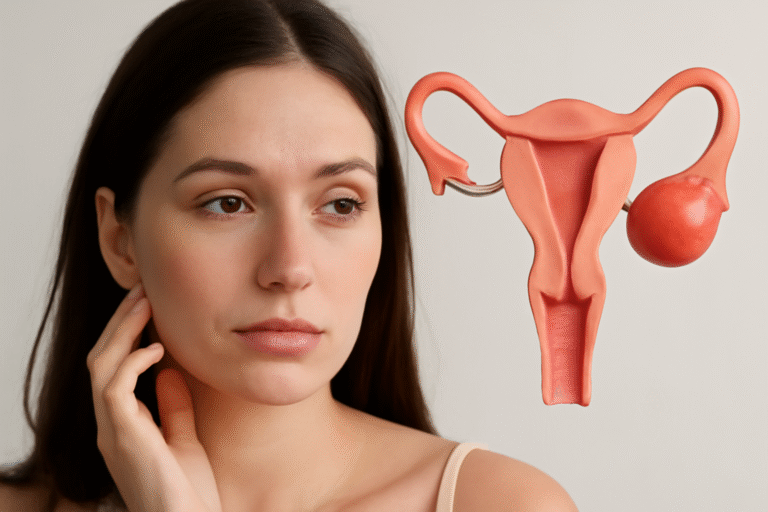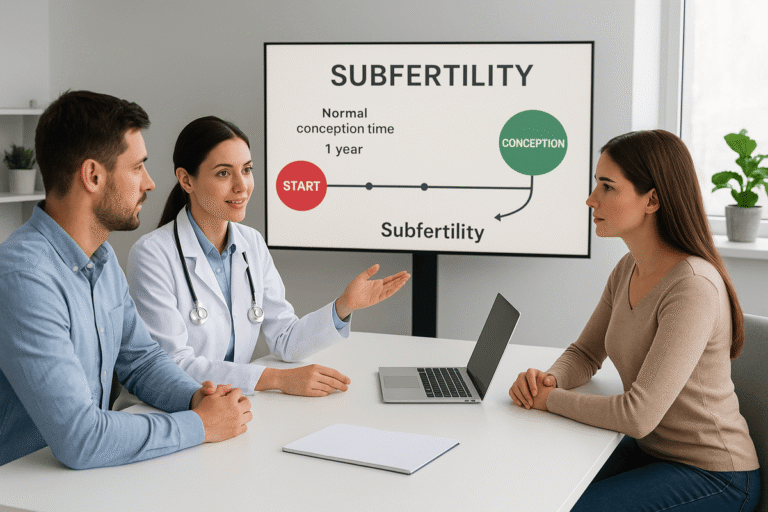Introduction
Many women question if pregnancy may be identified only one week after conception. Although most pregnancy tests can’t verify pregnancy this early, your body may already be exhibiting slight indicators. This book looks at the extremely early signs that might suggest pregnancy at just one week post-conception (about 3 weeks in medical terminology). Examining every possible symptom in depth, we will clarify the biological changes underlying them and assist you in telling early pregnancy indicators from premenstrual symptoms
Understanding Pregnancy Timing
Before talking about symptoms, let us first define pregnancy dates. Pregnancy is counted by doctors from the first day of your last menstrual period (LMP); hence, at “1 week pregnant”, conception hasn’t really taken place. But some people do start to see slight changes if you’re monitoring ovulation and looking at one week following conception (about 3 weeks pregnant medically). Differences in hormone sensitivity and implantation timing cause this early detection to vary considerably across people.
Implantation Bleeding: The Earliest Sign
Implantation bleeding, which happens when the fertilized egg adheres to the uterine lining, may be one of the first obvious indicators. Usually, this happens six to twelve days following fertilization. Unlike normal menstrual bleeding, implantation bleeding is far lighter, usually only faint pink or brown spotting lasting 1-2 days. It’s not strong enough to fill a tampon or pad. Though the time (earlier than planned) and the mild character of the bleeding are main distinctions, some women confuse this for an exceptionally light menstruation.
Mild Cramping and Discomfort
Many women have slight cramps during this early period together with implantation haemorrhage. Unlike normal monthly cramps, these implantation cramps are sometimes more localized in the lower abdomen or back and typically less severe. Cramping happens as the uterus changes to fit the embryo implanting. Although comparable to PMS pains, they are frequently less severe and do not follow the typical pattern of rising intensity seen with menstrual cramps.
Breast Changes and Tenderness
Hormonal fluctuations can lead to significant breast changes rather early in pregnancy. As early as one week after conception, many women say their breasts feel abnormally sensitive, plump, or tingling. Some women see the areolas darkening a bit and the nipples may get more sensitive. Rapidly rising amounts of estrogen and progesterone trigger these changes, which get the breasts ready for milk production. Unlike PMS-related breast discomfort that fades when your period begins, pregnancy-related breast changes often last and might possibly get worse.
Fatigue and Exhaustion
Another frequent early indicator is extreme weariness. Even with enough sleep, you might feel utterly exhausted or require naps. Rising progesterone levels, which have a sedating influence, cause this extreme fatigue. Your body is also working hard to assist the early phases of pregnancy, therefore raising metabolic needs. The weariness sometimes seems deeper than typical exhaustion and less receptive to rest.
Changes in Basal Body Temperature
Women keeping track of their basal body temperature (BBT) might see significant trends. Progesterone causes BBT to often rise a little after ovulation and remain high until shortly before menstruation. Should I be pregnant, the fever stays high rather than falling. An early pregnancy sign can be a prolonged raised BBT for more than two weeks post-ovulation. Meaningful trends may be seen with this approach by regular tracking.
Heightened Senses and Food Aversions
Many women say very early in pregnancy that their sense of smell and taste alters unexpectedly. Some people get a metallic taste in their mouth (dysgeusia), while others find once nice scents (such as coffee or perfume) to be offensive. Hormonal swings trigger these changes, which might result in unanticipated dietary desires or aversions. Some believe the increased smell sensitivity to be an evolutionary defence against possibly dangerous chemicals.
Also Read : 30-days Plan for Conception
Frequent Urination
Some women may experience more urine before a missing period. The pregnancy hormone hCG raises blood flow to the pelvic region, hence encouraging the kidneys to generate more urine. The expanding womb also starts to gently press on the bladder. Although often linked with later pregnancy, some women do get this symptom rather early.
Mood Swings and Emotional Changes
Early pregnancy’s hormonal rollercoaster can lead to notable mood swings. You may feel unexpectedly emotional, have inexplicable anger, anxiousness, or quick tears. The intricate interaction of increasing hormones on brain neurotransmitters causes these mood fluctuations. Although PMS can lead to mood swings, emotional changes connected to pregnancy tend to be more obvious and lasting.
Digestive Changes: Bloating and Constipation
Progesterone’s relaxing influence on smooth muscles reaches the digestive tract, usually resulting in bloating and constipation early in pregnancy. Your stomach may feel oddly full or gassy, and your bowel motions can become less consistent. Though they usually last longer in pregnancy, these digestive changes can start early and are sometimes confused with PMS symptoms.
Early Nausea and Queasiness
Some women report moderate nausea as early as one week following conception; however full-blown morning sickness typically appears later. Often getting worse in the morning, this queasiness can come and go at any time. Though not completely known, the precise origin is connected to quickly rising hCG levels and heightened scent sensitivity.
Distinguishing Pregnancy Symptoms from PMS
Many early pregnancy symptoms mimic premenstrual symptoms, which can be confusing. Important distinctions include the ongoing symptoms past when your period would typically start, the particular presence of implantation bleeding, and the severity of certain symptoms such as exhaustion and breast soreness. Pregnancy symptoms also tend to get worse instead of going away as they would with an approaching menstruation.
When to Take a Pregnancy Test
Although testing right away seems alluring, most home pregnancy tests won’t show pregnancy at only one week post-conception. hCG, the hormone, has to build up to noticeable levels. Accurate findings come from waiting at least 10–14 days following ovulation or till after your missed menstruation. Though even these often need waiting until around six days before your expected period, early detection tests may say to work sooner.
Next Steps if You Suspect Pregnancy
Should you have several early signs, think about monitoring them every day. Using first-morning pee when hCG content is greatest, wait until the suitable time to perform a pregnancy test. Should you be positive, make an appointment with your doctor to verify the pregnancy and start prenatal care; folic acid supplement use should also start for good fetal development.
Conclusion
Although one week post-conception is rather early to identify pregnancy, some women do see slight indications such as implantation blood, minor cramping, breast soreness, and weariness. These symptoms are caused by the significant hormonal changes your body undergoes in preparation for pregnancy. Many early pregnancy symptoms, on the other hand, resemble PMS, so verifying without a test is challenging. Monitoring your symptoms, waiting until the right moment to test, and then seeing a doctor for verification and direction is the most dependable way. Every woman’s journey is different; hence, while keeping reasonable expectations regarding early detection, be aware of your body’s signs.





[…] Also Read: Initial Symptoms of Pregnancy […]
[…] 1st Week Signs Of Pregnancy […]